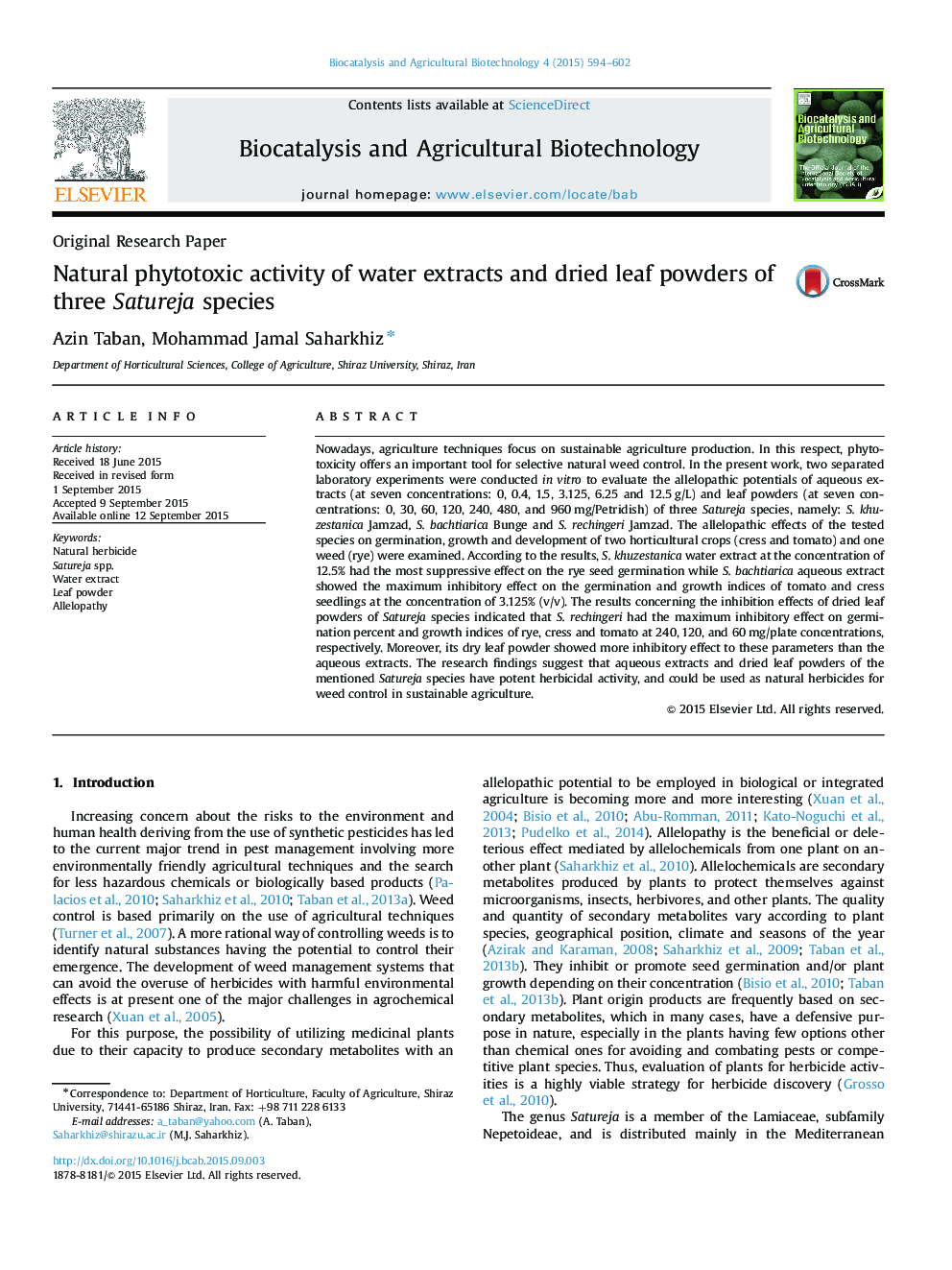| Article ID | Journal | Published Year | Pages | File Type |
|---|---|---|---|---|
| 2075313 | Biocatalysis and Agricultural Biotechnology | 2015 | 9 Pages |
Nowadays, agriculture techniques focus on sustainable agriculture production. In this respect, phytotoxicity offers an important tool for selective natural weed control. In the present work, two separated laboratory experiments were conducted in vitro to evaluate the allelopathic potentials of aqueous extracts (at seven concentrations: 0, 0.4, 1.5, 3.125, 6.25 and 12.5 g/L) and leaf powders (at seven concentrations: 0, 30, 60, 120, 240, 480, and 960 mg/Petridish) of three Satureja species, namely: S. khuzestanica Jamzad, S. bachtiarica Bunge and S. rechingeri Jamzad. The allelopathic effects of the tested species on germination, growth and development of two horticultural crops (cress and tomato) and one weed (rye) were examined. According to the results, S. khuzestanica water extract at the concentration of 12.5% had the most suppressive effect on the rye seed germination while S. bachtiarica aqueous extract showed the maximum inhibitory effect on the germination and growth indices of tomato and cress seedlings at the concentration of 3.125% (v/v). The results concerning the inhibition effects of dried leaf powders of Satureja species indicated that S. rechingeri had the maximum inhibitory effect on germination percent and growth indices of rye, cress and tomato at 240, 120, and 60 mg/plate concentrations, respectively. Moreover, its dry leaf powder showed more inhibitory effect to these parameters than the aqueous extracts. The research findings suggest that aqueous extracts and dried leaf powders of the mentioned Satureja species have potent herbicidal activity, and could be used as natural herbicides for weed control in sustainable agriculture.
